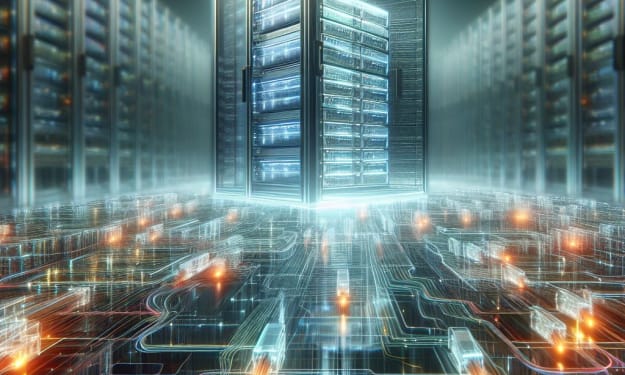server is the essential thing for the world: part 2
learn servers series and almost everything about servers.

Server structures
The idea of servers dates back almost as far as the inception of networking. Essentially, the purpose of a network is to facilitate communication between computers and share work or resources. Over time, computing has advanced, leading to the development of various server architectures and hardware configurations.
Mainframe or minicomputer( AS/ 400)
You could say that the original servers, mainframe computers, and latterly, minicomputers, handled nearly all calculating tasks except the commerce with the stoner through a screen and keyboard, which was left to the customer system.
Computer hardware server
The coming major surge of servers included computer-grounded servers. In numerous felicitations, these servers were nothing further than larger, more important desktop computers. similar servers were generally more precious and held far more memory and fragment space than utmost customer computers. Each garçon was still tone-contained with its motherboard, processor, memory, fragment drives, and power force. Servers like this were frequently housed in air-conditioned apartments called server rooms and were latterly bolted into racks for better storehouses and availability.
Blade servers
The original computer server tackle was large and stored in racks that could hold hundreds of pounds. Over time, still, brisk means of connecting tackle redounded in parts of the server being uprooted from a single-tone-contained device. By removing hard drives, barring internal cooling, and the ongoing miniaturization of calculating parts, servers were ultimately reduced to a single thin server known as a blade server. While still stored in racks in server apartments, blade servers are lower and can be replaced more fluently.
Combining servers
Indeed before virtualization, servers were being uprooted from the standard model of a single server operating system installed on a hardware machine. Technology, similar to network-attached storehouses, removed the need for a garçon to have its storehouse. Other technologies, similar to mirroring and clustering, enabled pieces of hardware to be combined into larger, more important servers. Such a server might consist of several blades, several attached storage devices, and an external power force, and each piece could be shifted out for another while the server was still running.
Virtual servers
Virtual Servers still need hardware, but the hardware is now running a different process called a hypervisor. Sometimes, like Microsoft’s hyper-V, a fully-fledged operating system is still running on the hardware. Other times, a bare-metal hypervisor can be installed directly on the server hardware. In both cases, the hardware is often distributed across a number of blade servers, a networked storage environment, and a power supply, creating an environment where you can’t tell where one server ends and another starts.
Key components of a server
Server systems are comprised of fundamental parts that have the ability to run code, send or receive data, and retain this data for a shorter or longer period. While these parts are also found in present-day laptops, smartphones, and IoT devices, they are much more potent in server machines.
Let’s understand the four key components of a server:
Processor
The central processing unit (CPU), commonly known as the processor, serves as the primary component of every server. It functions as the server system's central processing unit. Modern server computers are now furnished with robust processors featuring numerous cores to handle a multitude of instructions simultaneously. Leading processor manufacturers in the market today comprise Intel Xeon processors, HPE, Dell, Huawei, and various others.
RAM
RAM functions as the short-term memory module that holds operational data and machine code. Processors depend on RAM for faster data processing. Servers, which handle multiple instructions, save time by accessing data from RAM instead of hard drives. Furthermore, computer programs being executed by the processor are usually stored in the main memory (RAM). The speed at which the server computer performs tasks is greatly influenced by the efficiency of the memory.
Storage
Servers utilize storage components to house a variety of files essential for running machine code. These files encompass operating system files, libraries, databases, website data, application data, and more. Traditional hard drives and solid-state drives (SSDs) are commonly used on the server end to store data, with the choice of storage element being contingent on specific needs and requirements. For instance, a database server must have the ability to read and write data at a faster rate compared to a file archive server, which does not necessitate such speed.
It is crucial to note that the performance of a server can be adversely affected by a single storage device. In the event of a storage component failure, all websites hosted by the web server may become inaccessible, leading to a poor online user experience. Consequently, many servers implement a Redundant Array of Independent Disks (RAID) to mitigate such issues and enhance fault tolerance. RAIDs consist of independent disks that offer superior storage performance and data redundancy in comparison to a single storage component.
Bandwidth
The Server processes user requests and delivers content over the Internet or a combination of WAN and LAN. It is necessary for servers to have high bandwidth in order to handle multiple clients and respond to queries in a timely manner.
sources:






Comments
There are no comments for this story
Be the first to respond and start the conversation.